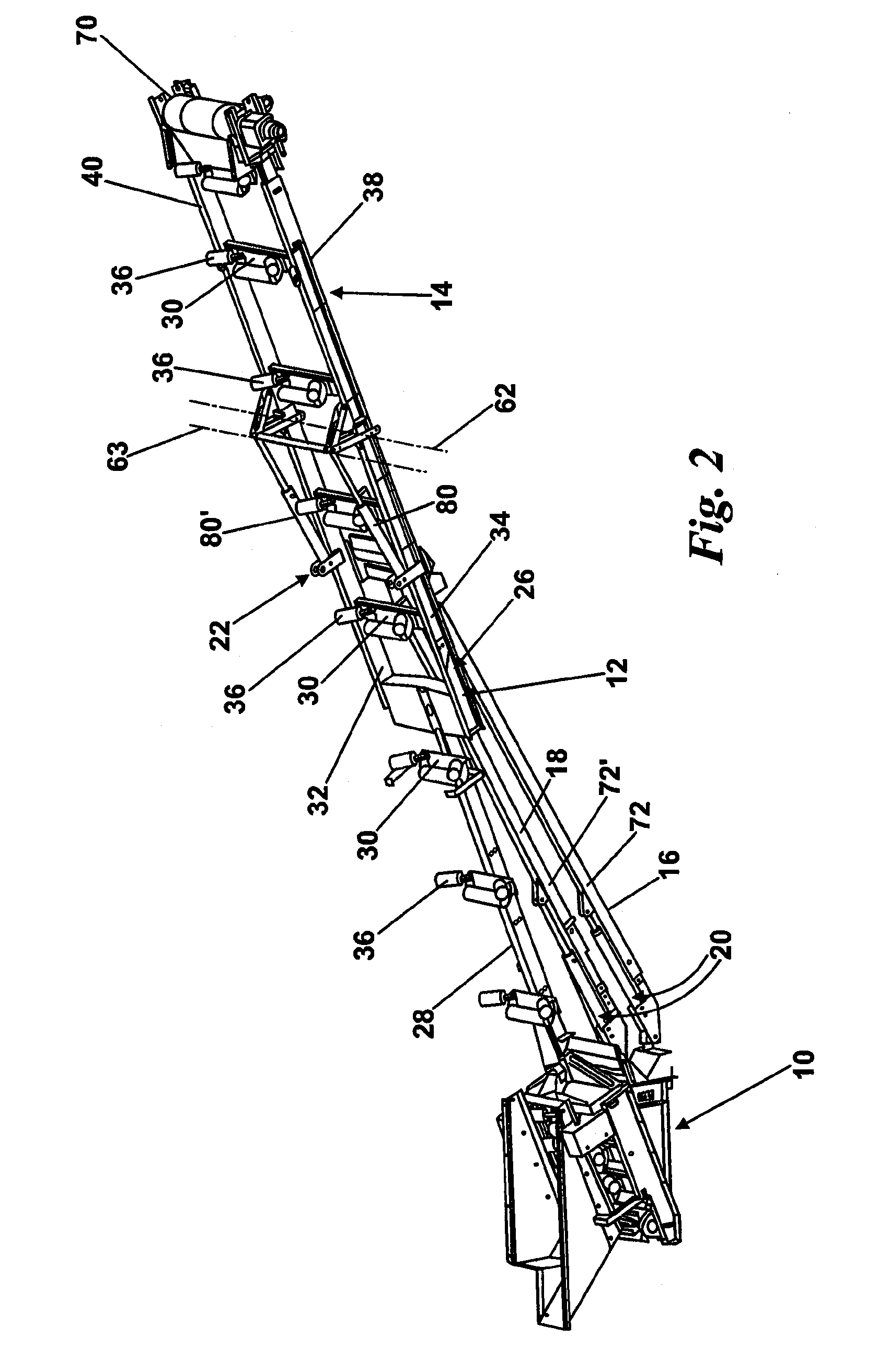Conveyor system
a conveyor system and conveying system technology, applied in the direction of screening, solid separation, sieving, etc., can solve the problems of easy folding, difficulty in adjusting the load,
- Summary
- Abstract
- Description
- Claims
- Application Information
AI Technical Summary
Benefits of technology
Problems solved by technology
Method used
Image
Examples
Embodiment Construction
[0043]A screening unit 1 comprises a body 2 which has a number of side conveyor systems generally indicated at 4. The screening unit also has at least a rear conveyor system 6 extending from a rear 8 of the screening unit 1.
[0044]A typical conveyor system in accordance with the invention may be seen in FIG. 2. Each side conveyor system comprises a base frame section 10, a mid frame section 12 connected to the base frame section, and an upper frame section 14 connected to the mid frame section. A first support member 16 and a second support member 18 are each connected between the base frame section and the mid frame section. A first operating means 20 is connected between the base frame section and the mid frame section, and a second operating means 22 is connected between the mid frame section 12 and the upper frame section 14. In the illustrated embodiment the first and second operating means 20 and 22 each comprise a pair of hydraulic rams the operation of which will be described...
PUM
 Login to View More
Login to View More Abstract
Description
Claims
Application Information
 Login to View More
Login to View More - R&D
- Intellectual Property
- Life Sciences
- Materials
- Tech Scout
- Unparalleled Data Quality
- Higher Quality Content
- 60% Fewer Hallucinations
Browse by: Latest US Patents, China's latest patents, Technical Efficacy Thesaurus, Application Domain, Technology Topic, Popular Technical Reports.
© 2025 PatSnap. All rights reserved.Legal|Privacy policy|Modern Slavery Act Transparency Statement|Sitemap|About US| Contact US: help@patsnap.com



